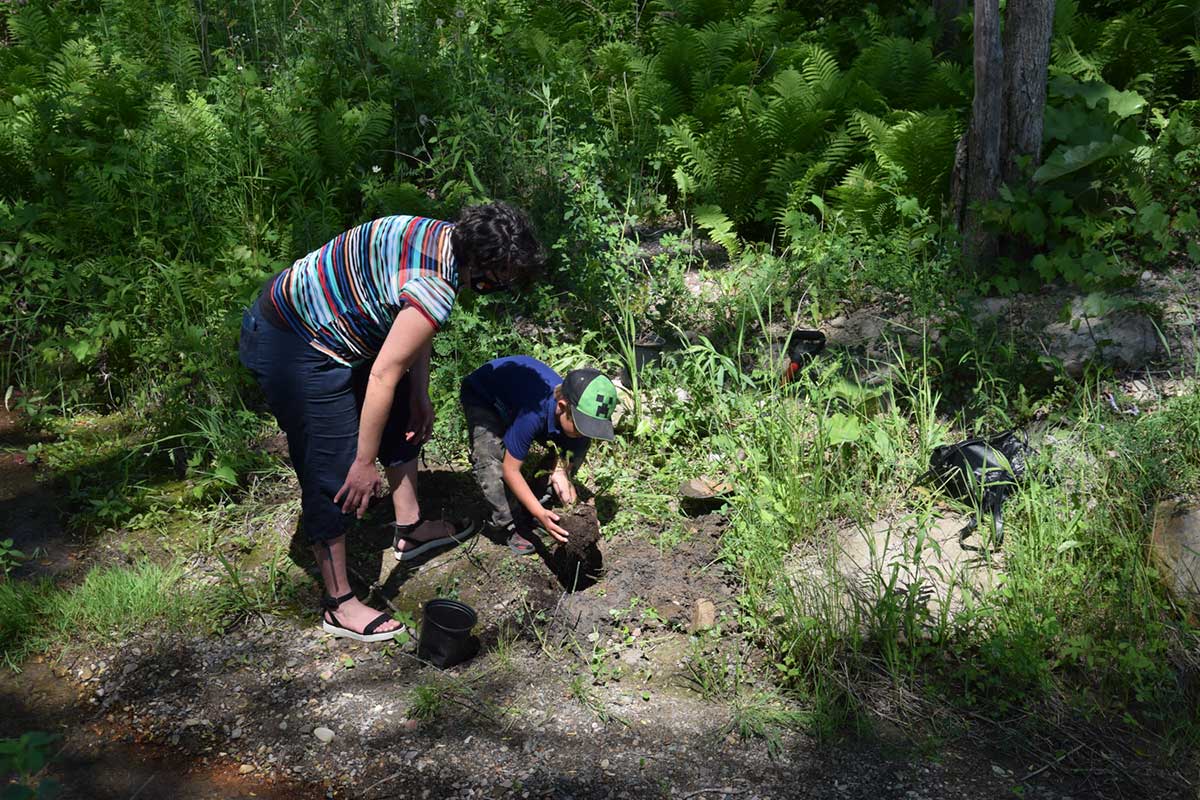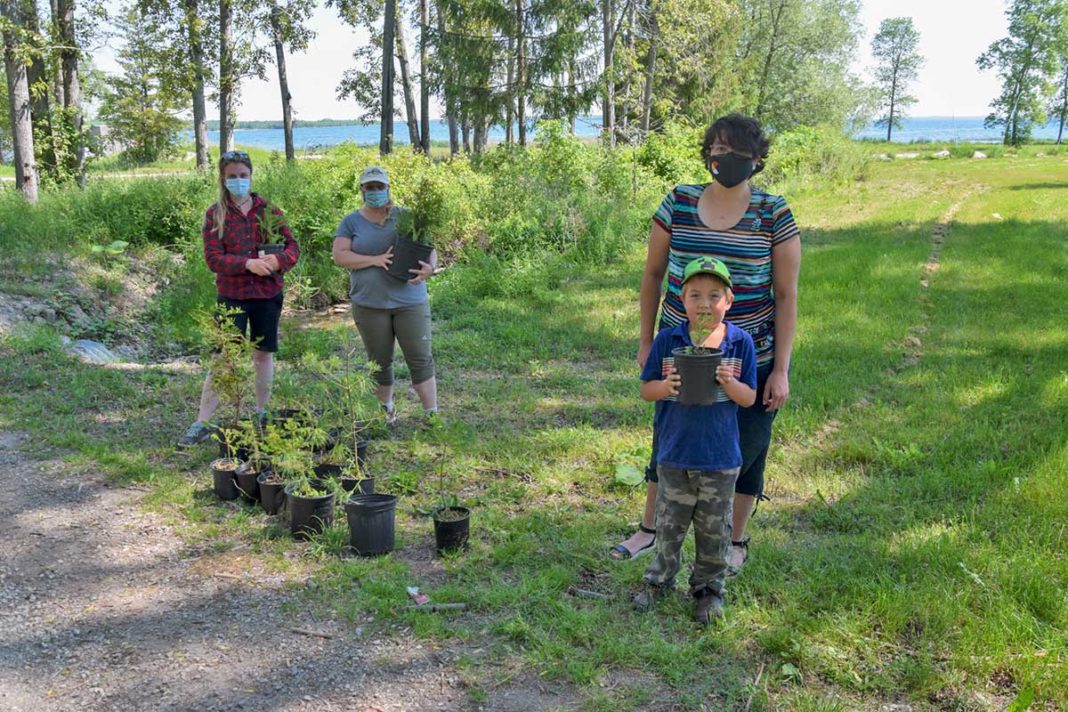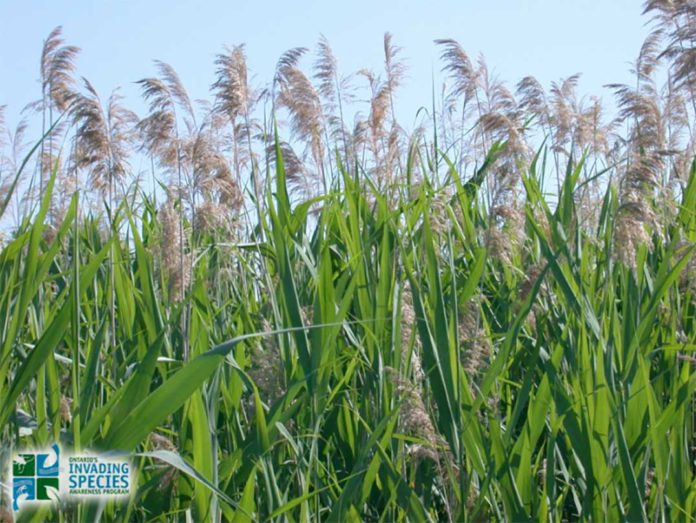SHEGUIANDAH – World Environment Day activities at Sheguiandah First Nation had to be postponed due to unforeseen circumstances, but instilling traditional values of preservation for seven generations called for rescheduling.
“The reason why I am doing this is because I was thinking to myself ‘what can I do for the children, a way to pass on the teachings and the culture?’” said Shelba Deer, program co-ordinator for the Community Wellness Worker Program at the Sheguiandah First Nation Health Centre. “The idea of planting trees came to me when I took my three nephews and one niece out on Easter weekend to show them around Sheguiandah First Nation.” Her nephews and niece do not reside on the reserve or even Manitoulin Island, explained Ms. Deer, although one nephew has been living in Sheguiandah for over a year.
“I took them down to the Sheguiandah Bay or Sheguiandah beach by the powwow grounds,” she recalled. “I got them to offer semaa (tobacco) and I asked them to say ‘Miigwech to the water spirits.’ My nephew asked me why we say miigwech to the water and I told him to give thanks to the water spirits like the thunderbirds and Mishipeshu (the underwater panther also known as the great lynx) because they help and protect the water. Right then and there I got my answer on how I would help or teach children to learn the culture through programming or other work I do like Kagawong River Stories.”
“I was thinking ‘what can I do for the Earth and what can I do for the children?’ and I was outside on my break and I remembered planting trees as a child with one of the Sheguiandah programs when I was about five or six years old. I thought ‘why not do something similar but do with a cultural approach’ and I also wanted to honour the spirit of the trees. Through offering semaa and praying it all came together on how to coordinate this project and decided to partner with Sue Meert and Manitoulin Streams.”
The next few weeks were spent planning on how they could coordinate the planting of trees for World Environment Day incorporating a science aspect on ecology. Ms. Deer had already met Ms. Meert through working with 4elements Living Arts in 2016 while putting on that organization’s highly successful River School.

The plan the duo came up with included planting or giving community members spruce, cedar and white pine seedlings.
“On June 9 I met with Sue Meert and her co-worker Maddie Wagar,” said Ms. Deer. “Sue and I offered tobacco and to give our thanks to the trees and water for doing this planting of the trees. We planted four trees for the community with some of our band members and posted a demonstration on tree knowledge and on how to plant trees on our Sheguiandah First Nation Health Centre page for community members to view.”
On June 10, from noon to 2 pm the community held a take-away barbecue and pick-up for community members to take home their very own trees they could plant with their children and/or families. Ms. Deer encouraged community members to post photos of their tree planting on the community’s event page titled ‘World Environment Day.’
“Also, we will plant some milkweed seeds for the butterflies so the butterflies do not disappear,” she said. “They are also pollinators for the plants.”
“Doing this with the children is very important,” noted Ms. Deer. “They are the ones who are the new generation and their imagination is what will connect them with spirit and the culture since children have limitless imaginations. It is always good to start them out at a young age and one is never too young to learn the culture and what it means to be Anishinaabe.”
For six-year-old Conan Agoneh trees are very personal. His mother explained that Conan’s favourite tree near where the family lives in Sudbury was recently cut down, devasting the young child who was very attached to the ancient tree. “He came home crying,” said Dez (Desiree) Aguonia. She took him to the tree and helped him lay down semaa (tobacco) for the spirit of the tree and to thank it for the comfort it had provided him in life.”
The benefits of planting trees extends into all aspects of life, noted Ms. Deer. “Trees help out with what we breathe in, as what they breathe out is an exchange of life. Trees carry our prayers and they are happy to help us when we talk to them and they celebrate with one another knowing they did that. That’s why it is good offer our semaa to them and say miigwetch. They also help with and provide things like wood for a fire to keep warm or for when we have ceremony.”
The bond between trees and the land extends out into every aspect of Anishinaabe life and culture. There is no greater symbol of securing abundance for the next seven generations and provides a fitting symbol for World Environment Day.
Funding for the program was provided by the Anishinabek Nation (Union of Ontario Indians) through the Indigenous Healing and Wellness Strategy program.





